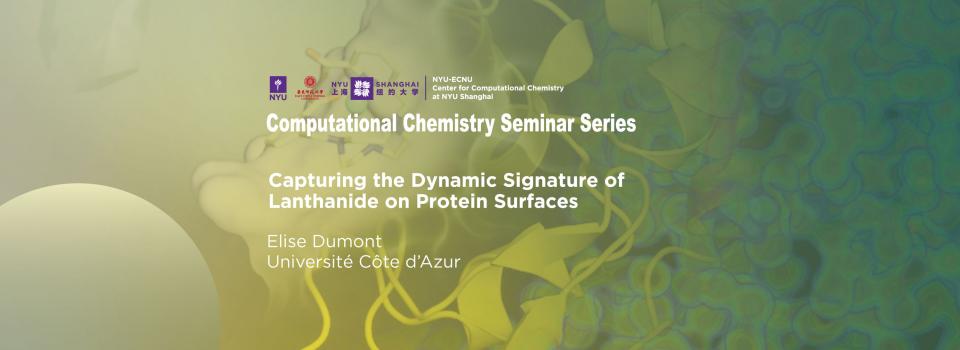
Abstract
Interaction of lanthanide (Ln) ions or complexes with biomolecules is versatile with timely applications such as (chiral-) sensing, paramagnetic tags, and even assisted nucleation. In order to capture the “walk” of lanthanide complexes on protein surfaces, we have developed a simulation protocol based on classical-then-QM/MM molecular dynamics simulations, honed against paramagnetic NMR measurements. Whereas the tris-dipicolinate lanthanide complex gives rise to almost purely electrostatically-driven yet competitive association, we show that a patterned, heptacoordinated Ln complex offers a much more versatile range of interactions. Our computational approach is now able to guide crystallization assays, as we put forward a database-driven, complementary approach to account for crystallization media. The next goal will be the design of new supramolecular glues tailored to consolidate protein-protein interfaces.
Biography
Professor Elise Dumont graduated from the Department of Chemistry of the Ecole Normale Supérieure de Paris in 2003 and obtained her PhD thesis in 2006 from Univ. Paris VI. After a few postdoctoral stays at UCSF, ANU and Univ. Nancy, she was in 2008 appointed as Assistant Professor at the ENS Lyon to develop a research line on computational DNA damage and repair, relying on classical QM/MM(-MD) simulations. She was promoted to Full Professor in 2017 and was nominated in 2019 as a Junior member of the Institut Universitaire de France. Her research interests (100 publications) also recently span protein-ligand or host-guest binding free energies methods, which she is applying for supra(bio)molecular systems. She joined the Institut de Chimie de Nice in 2022 as a Distinguished Professor to develop a research line in protein-ligand binding.
Seminar Series by the NYU-ECNU Center for Computational Chemistry at NYU Shanghai


